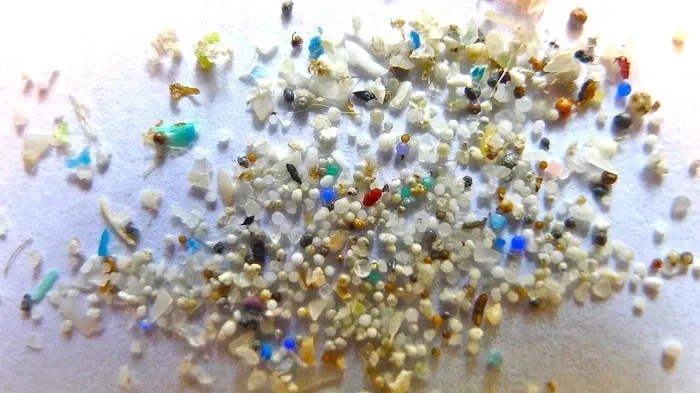It's urgent.
Latest studies say we are accumulating the equivalent of a credit card of microplastics in our body every month. And if that's not an urgent call for help, I'm not sure what is!
A UK university study has just revealed that water treatment processes – the way our municipal water supply treats our water – exacerbate break down of microplastics into nanoplastics.
A team at Deakin's Institute for Frontier Materials (IFM) working with Surrey University UK found that the presence of nano and microplastics in water had become a major environmental challenge. It poses an an emerging threat to aquatic ecosystems – and human health.

Unfortunately, in the present fear-laden political and social environment many people have simply consciously – or unconsciously – decided to ignore health warnings.
Their present (relative) level of daily peace of mind is so threatened that they choose to live in a permanent state of denial. So what can we do for people who make this choice? Unfortunately it's their choice. We can only alert them and hope that they have sufficient self preservation instinct to avoid the obvious and nasty outcome of a body overloaded with microscopic plastic particles.
And of course they may see no effect of their denial for some years.
When I was 24, I manufactured hang gliders.
Part of the construction entailed grinding PVC battens to the right size and shape. Being 24 and thinking I was invincible, I never bothered to wear any mouth and nose guard. I did this for two years – inhaling huge amounts of PVC dust regularly – and I really do wonder at how I am still alive and healthy at age 72!
Born lucky, I think.
I find it deeply concerning that the Surrey University research found water and wastewater treatment processes actually break microplastics down into nanoplastics, which may yield potentially catastrophic outcomes for the wellbeing of future generations.
Dr Ludovic Dumée co-led the study, and he noted there although had been a substantial amount of work on nano and microplastics pollution (as I have reported before today) how they interact with water and wastewater treatment processes had not been fully understood.
“Our results show that water and wastewater treatment processes break microplastics down into nanoplastics. Our analysis suggests new strategies are needed to limit the number of nano and microplastics in water and wastewater to keep water quality at the required standards and reduce threats on our ecosystems.” Dr Dumée said.
The small size and high specific surface area of nano and microplastics makes them easy to ingest by living organisms where they can reach toxic levels. Their small size also makes it easy for them to travel along water and wastewater treatment processes.
What you can do now.
So.. every time we drink tap water we may be also partaking of a toxic future in the form of fine plastic. Obviously what we require is a water filter with extreme filtration to remove these microscopic particles!
Of course, there has always been Reverse Osmosis. This relatively complex water filtration technology will remove the nanoplastics, but the difficulties associated with operating it, having components changed at the right interval, and having the space to install it undersink and the enormous waste of water that is inescapable for the RO user makes it something people buy because (until now) they believe they have no choice.
There are filter technologies designed for very bad quality water. The basic rule of water filters has always been that the smaller the holes in a filter, the better filtration. Of course, this also means that if you have a microfile hole filter you also have a very slow flow. It will probably just drip, and will clog quickly. Some smart designers have included a hand pump which forces dirty water through their ultrafine filters.. but we have slow flow only seen this idea on portable filters used in extreme conditions.
Breakthrough technology from NASA
The old and golden rule we talked about above of good filtration = small filter holes is no more, thanks to a very clever technological breakthrough pioneered by NASA, that we call Ultra D.
Instead of small holes, the new technology allows water to pass easily through the filter media. So the flow problem is solved.
What about the filtration problem, and the nanoplastics?
Heres the difference.
All the way through the filter are embedded nanostrings of electrostatically charged inert metal. So as the particle passes the nanostring, the electrostatic charge of the metallic string attracts it, causing it to attach to the nanostring. The water – less particles – continues on at the sort of flow rate you can expect of any normal water filter.
The Ultimate Result?
Extreme filtration.
Simple to install and simple to use filter- unlike reverse osmosis.
And at a cost far below a reverse osmosis.
Go here to learn more. We deliver worldwide.
-The research by Dr Dumée, PhD candidate Marie Enfrin and Dr Judy Lee from Surrey University's Department of Chemical and Process Engineering was published as 'Nano and microplastics in water and wastewater treatment processes – Origin, impact and potential solutions' in Water Research and can be found here.
COVER IMAGE: OREGON STATE UNIVERSITY/FLICKR

